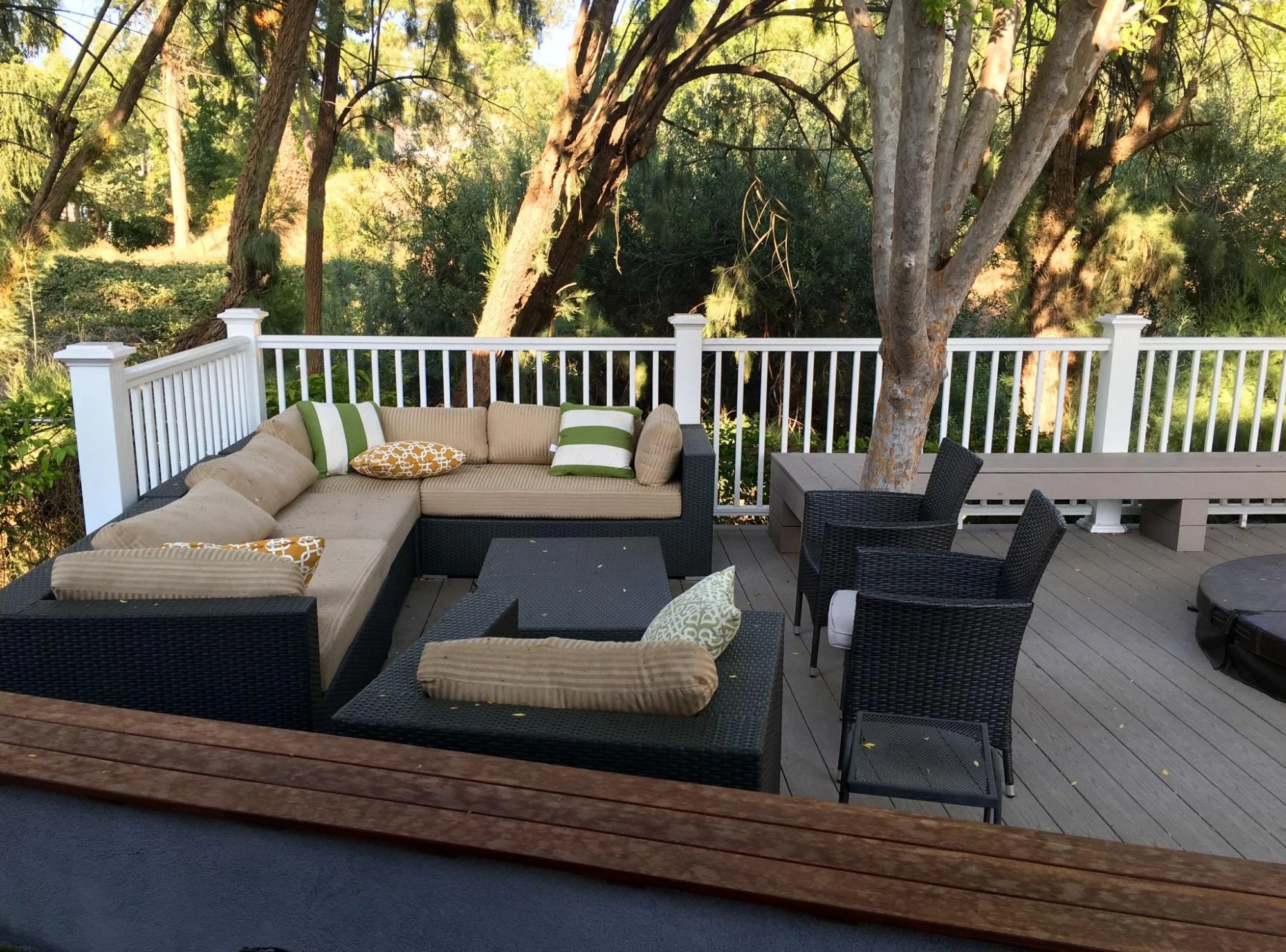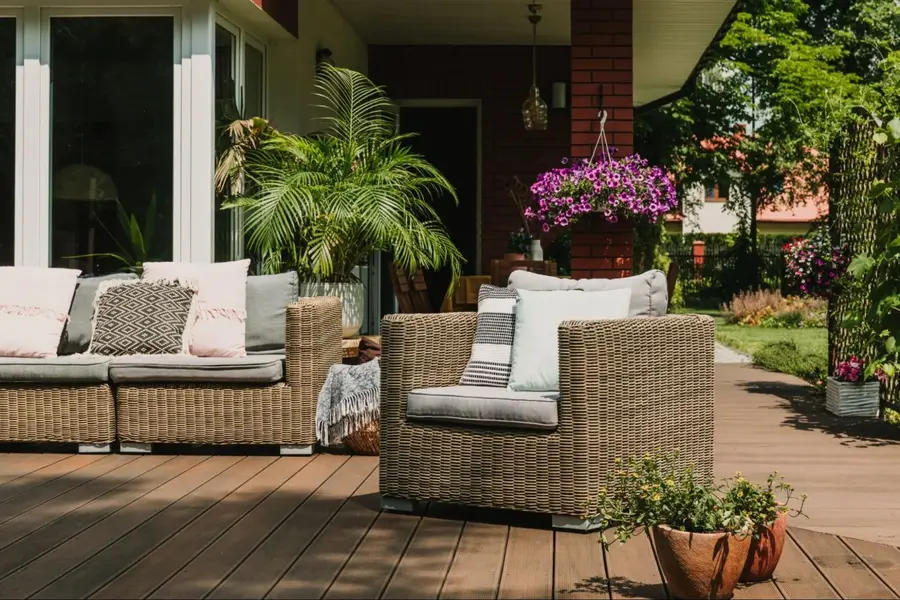
Outdoor decks provide an ideal space for relaxation and entertainment, making them a crucial aspect of any home. To ensure your deck remains safe and beautiful year-round, proper maintenance and timely repairs are essential. Regular cleaning, sealing, and inspecting for damages like rot or loose boards can extend the life of your dream deck. This not only enhances your outdoor living experience but also protects your investment.
Using quality materials is important for longevity. We recommend oil-based stains over water-based for better protection against mold and mildew. Additionally, surrounding your deck posts with maintenance-free materials can save time and effort in the long run.
Implementing these practical tips will keep your deck looking great for years. By maintaining the deck regularly, you can avoid major repairs and extend its lifespan, ensuring your outdoor haven remains a perfect spot for gatherings.
It’s essential to keep your deck in good shape to ensure safety and prolong its life. Regular cleaning, inspecting for decay, and repairing damage are key elements of deck maintenance.
Regular cleaning helps prevent mold, mildew, and algae buildup. To start, sweep the deck regularly to remove leaves and debris. Use a garden hose or pressure washer to wash the surface, targeting areas with buildup.
For tougher stains, a deck cleaner can be applied with a scrub brush. Avoid metal brushes on softwoods such as cedar or redwood to prevent damage. Cleaning solutions should be rinsed thoroughly to avoid residue.
Once clean, let the deck dry completely before using it or applying any treatments or sealants.
Annual inspection is critical for finding and preventing wood rot and decay. Check for signs of moisture damage, especially around ledger boards and joist hangers. Look for discoloration, soft spots, and wood that gives way under pressure. These are signs of decay and need immediate attention.
Inspect the stability of the deck by checking for any loose nails or screws and making sure all connections are secure. Regular inspections can help you identify problems early and maintain the deck’s structural integrity.
Using moisture barriers can also help prevent damage by waterproofing the critical components.
Timely repairs are necessary for maintaining a safe deck. Inspect for damaged boards, cracks, and loose nails or screws. Replace any rotten or cracked boards to avoid accidents. Loose nails can be a tripping hazard, so hammer them back in or replace them with screws.
For extensive damage, resurfacing the deck might be necessary. This involves removing old boards and replacing them with new ones. Regular deck repair helps maintain the deck’s appearance and durability, extending its life.

Keeping your deck in top shape involves protecting it from the elements and regular wear and tear. These tips focus on staining and sealing, securing components, and enhancing safety and comfort to ensure your deck lasts for years.
Applying a stain or sealant is crucial for wooden decks, such as pressure-treated lumber, cedar, or redwood. Start by cleaning the deck thoroughly to remove dirt, mold, and bacteria. Use a mixture of sodium hypochlorite or Simple Green with a pump sprayer to treat stubborn spots.
After cleaning, let the deck dry completely. Sand any rough areas to ensure a smooth surface for the stain. Choose an oil-based stain for better penetration and durable protection. Apply the stain or clear sealer with brushes or rollers, ensuring even coverage.
Over time, components like deck screws, bolts, and railings can become loose or damaged. Regularly check these parts to maintain the structure’s integrity. Tighten loose screws or bolts, and replace any that are rusted or worn out with stainless steel or galvanized fasteners to prevent rust.
Inspect your decking boards and railings for signs of decay or damage. If you have an older deck, consider reinforcing it with additional blocking or supports. Upgrading to composite decking can also reduce future maintenance needs, offering longevity benefits.
Safety and comfort are paramount for an outdoor living space. Install landscape lighting to enhance evening visibility and ambiance. Check and clean gutters to ensure water doesn’t pool around the deck, leading to damage.
Utilize plastic sheeting or waterproof membranes to protect the deck from ground contact moisture. Updating railings to meet building codes and adding features like built-in benches or grills can also enhance the usability and enjoyment of the space. Ensuring that the deck is always free of debris will also keep it safe and inviting.
To keep your deck in great shape, follow a few essential tips. Regular maintenance is key.
Clean your deck once a year. This prevents dirt buildup and mildew. Use a stiff scrub brush and avoid metal brushes on softwoods like cedar or redwood.
Inspect the structural integrity annually. Check for rot, water damage, and loose boards. Address issues promptly to prevent further damage.
Applying sealant every 2-3 years helps protect against weathering. When choosing a stain, opt for oil-based ones to prevent cracking and warping and to enhance the wood’s natural color. Avoid water-based stains as they can wear down faster.
Fasten any loose parts. Cut pressure-treated 2-by-blocking to fit tightly between joists and screw them into place for added support.
By following these tips, you’ll keep your deck looking new and functioning well. If you need professional help, contact Kaminskiy Care and Repair for expert service.
For DIY repairs, check for loose or damaged boards and replace them promptly. Sand rough spots to prevent splinters. Clean the deck thoroughly using a deck cleaner or a mix of water and mild detergent. Apply a water-repellent finish to protect the wood from moisture and UV damage.
In winter, clear snow off the deck using a plastic shovel to avoid scratches. Make sure to remove debris like leaves to prevent mold. Applying a water-repellent finish before winter can offer extra protection. Check for and repair any loose or damaged boards to prevent further wear during the cold months.
Staining adds color and enhances the wood grain while also providing some protection against UV rays and moisture. Sealing focuses more on preventing water damage and can be clear or tinted. Depending on your climate and usage, you might need both. For additional protection, consider applying a stain with a built-in sealant.
Wood deck maintenance should be done at least once a year. Regular cleaning, inspection for damage, and applying a protective finish are essential. If your deck is in a humid or rainy area, consider more frequent checks for mold and mildew. This helps to keep your wood deck in optimal condition.